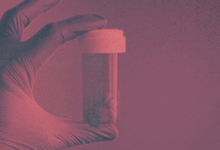What the HHT?
A blog for the HHT community
Blog
Cure HHT Leads Global Breakthrough in Bleeding Standards, Paving the Way for Future HHT Therapies
International Consensus Report Published in the American Journal of Hematology Aims to Transform HHT Research, Treatment, and Clinical Trials
Read MoreA History of Pazopanib
There are no FDA-approved therapeutics for the treatment of HHT. Cure HHT sought to change that. In many ways, the history of pazopanib is not unlike the story of the HHT community. Both are defined by persistence: a long battle for awareness, funding, and ultimately, solutions. Now, after years of dedicated effort, the paths of…
Read MoreThis Landmark HHT Study Could Shift National Attention
We’re excited to share some truly important news for the HHT community. A major new study done in collaboration between Cure HHT, Massachusetts General Hospital, and Diagonal Therapeutics — just published in the American Journal of Hematology — delivers something we’ve never had before: hard data that proves HHT is a serious, high-impact disease that’s…
Read MoreBeyond the Visible: Tobias’ Story
Hereditary Hemorrhagic Telangiectasia (HHT) manifests differently in everyone. For Tobias, its early signs were subtle and dismissed. From a young age, he battled frequent headaches and struggled with breathlessness, even during light activity. On the playground, he was always the first to tire, leading to hurtful comments about his fitness and a significant blow to…
Read MoreA Major Step Forward for HHT Treatment: Promising Preclinical Data from Diagonal Therapeutics
We’re excited to share two important updates from our partners at Diagonal Therapeutics. At this week’s European Hematology Association (EHA) Congress, Diagonal Therapeutics presented promising preclinical data demonstrating the potential of their antibody approach to address key challenges in HHT disease manifestations: Restoring ALK1-mediated cellular signaling Preventing and reversing arteriovenous malformations Preventing HHT-associated anemia And just recently…
Read More



